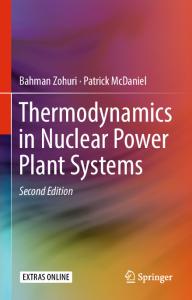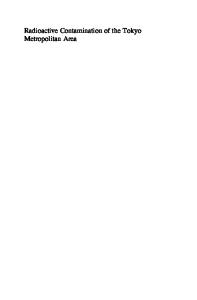Improving Nuclear Power Plant Safety with FeCrAl Alloy Fuel Cladding
- PDF / 422,205 Bytes
- 8 Pages / 612 x 792 pts (letter) Page_size
- 52 Downloads / 446 Views
Improving Nuclear Power Plant Safety with FeCrAl Alloy Fuel Cladding Raul B. Rebak,1 Kurt A. Terrani,2 William P. Gassmann,3 John B. Williams,4 Kevin L. Ledford5 1 GE Global Research, 1 Research Circle, CEB2551, Schenectady, NY 12309, U.S.A. 2 Oak Ridge National Laboratory, Oak Ridge, TN 37831 3 Exelon Generation, Kennett Square, PA 19348 4 Southern Nuclear, Chelsea, AL 35043 5 Global Nuclear Fuels Americas, Wilmington NC 28401 ABSTRACT The US Department of Energy (DOE) is partnering with fuel vendors to develop enhanced accident tolerant nuclear fuels for Generation III water cooled reactors. In comparison with the standard current uranium dioxide and zirconium alloy system UO2-Zr), the proposed alternative accident tolerant fuel (ATF) should better tolerate loss of cooling in the core for a considerably longer time while maintaining or improving the fuel performance during normal operation conditions. General Electric, Oak Ridge National Laboratory and their partners have proposed to replace zirconium based alloy cladding in current commercial power reactors with an iron-chromium-aluminum (FeCrAl) alloy cladding such as APMT. The use of FeCrAl alloys will greatly reduce the risk of operating the power reactors to produce electricity. INTRODUCTION Nuclear power plants are one of the most reliable and cleaner ways of producing electricity. For the last 60 years, commercial nuclear power plants have been used in 30+ countries to produce low cost electricity [1]. Commercial nuclear power plants (NPP) are designed to be operated without significant effect on the public health and safety and effect on the environment [2]. The main risk of operating a nuclear power plant is the release of radioactive elements into the environment, and for that reason, several barriers are constructed between the fuel containing the radioactive elements and the environment. The first barrier to protect the fuel is the hermetically sealed metallic cladding which envelops the pellets of uranium oxide. That is, maintaining the integrity of the cladding is the first crucial containment for the radioactive material. Further barriers include the reactor pressure vessel, the concrete building structure containing the pressure vessel and abundant amounts of water that remove the heat from the nuclear reaction [2]. The Nuclear Regulatory Commission (NRC) uses probabilistic risk assessment (PRA) methods to assess the likelihood and consequences of severe reactor accidents in accordance with 10 CFR 50.109 [2]. The Risk R is defined as a function of scenarios Si that can go wrong, of how likely the scenario will happen (frequency fi), and of the consequence Ci of the scenario Si (Equation 1) [3]. R = {Si, fi, Ci}
(1)
The notion of risk includes both opportunities and threats. The basis of managing risk is to build multiple barriers between the threats that can lead to an adverse event of, for example,
Downloaded from https:/www.cambridge.org/core. University of Illinois at Urbana - Champaign Library, on 23 Jan 2017 at 01:52:56, subject to the Camb
Data Loading...











